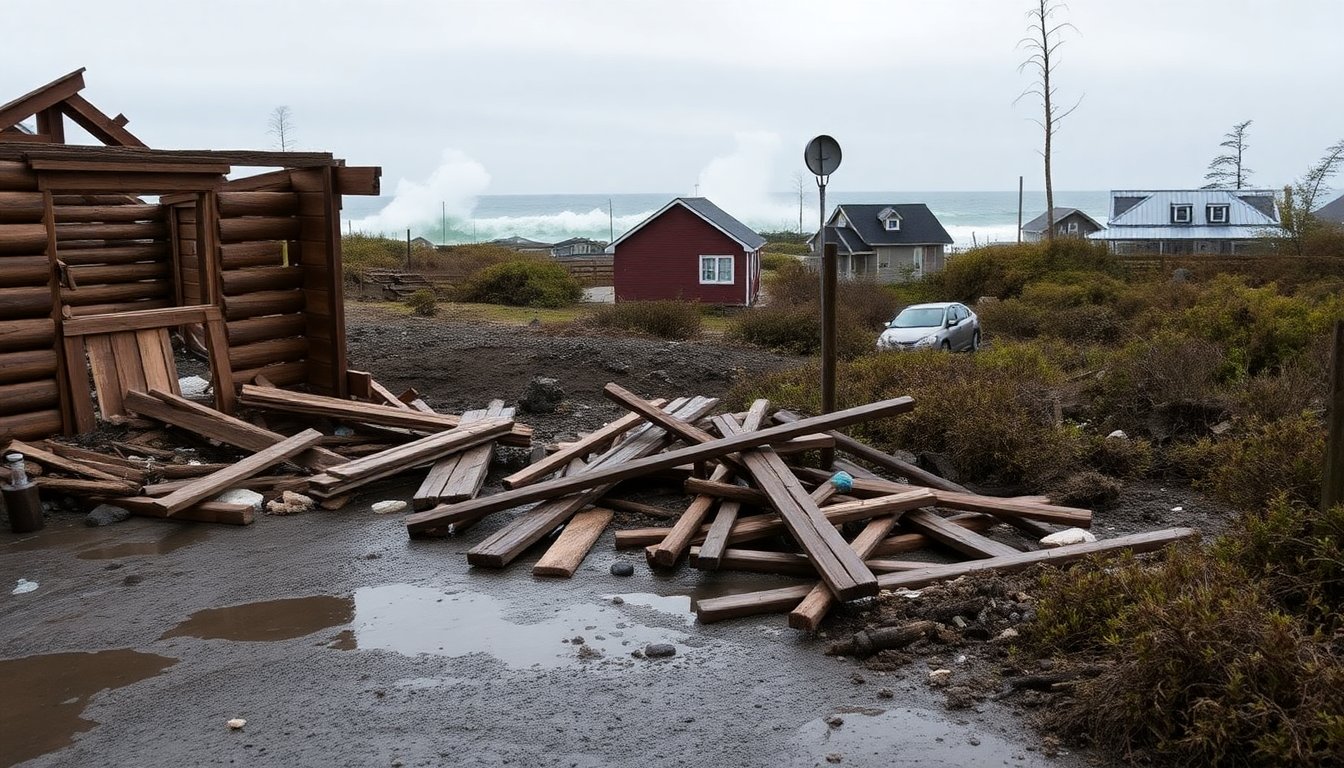Table of Contents
On a recent Wednesday, weather forecasts indicated rain and strong winds along the coast of Alaska. Two villages had already suffered devastating effects from the remnants of Typhoon Halong. Emergency officials were urgently seeking shelter for over 1,500 residents displaced by the storm’s destruction.
A powerful storm system unleashed fierce winds and storm surges, severely impacting low-lying Alaska Native communities along the Yukon-Kuskokwim Delta, located approximately 800 kilometers from Anchorage. The aftermath was catastrophic, leaving communities grappling with the loss of homes and safety.
Impact on local communities
The storm’s destructive force resulted in at least one confirmed death, while two individuals remained unaccounted for. The U.S. Coast Guard conducted rescue operations, saving nearly two dozen people from homes that had been swept out to sea.
In light of the crisis, hundreds of displaced individuals sought refuge in local school shelters, some of which lacked basic amenities such as functioning toilets. The grim reality was underscored by the fact that over 1,500 people were uprooted due to consecutive storms affecting the region.
Evacuation efforts in Bethel
The main hub city of Bethel, with a population of 6,000, became a focal point for evacuation efforts. Dozens of evacuees were flown to a shelter at the National Guard armory, while discussions continued about possibly transporting individuals to emergency accommodations in Anchorage and Fairbanks.
Among the evacuees was Brea Paul from Kipnuk, a village of 715 residents. She recounted witnessing approximately 20 homes drifting away under the moonlight on Saturday night. In a heartfelt message, she described how some houses appeared to signal for help with blinking phone lights, yet there was little anyone could do amidst the chaos.
The following day, Brea captured harrowing footage of a submerged house floating perilously close to her own. Amid uncertainty, she and her neighbors held a meeting in the local school gym, finding solace in singing songs while contemplating their next steps. Paul expressed her heartbreak over the unknown fate of her community members.
Search and rescue operations
In Kwigillingok, approximately 48 kilometers away, the situation was similarly dire. Authorities confirmed the discovery of one deceased individual, while the search for two missing men was suspended after their home was reported adrift. The local school, the only facility with power, quickly filled with 400 people, despite lacking adequate sanitation facilities.
A preliminary assessment from the state emergency operations center indicated that every home in Kwigillingok had sustained damage, with around 30 homes completely dislodged from their foundations. The emergency management office reported that the situation was critical, necessitating immediate attention.
Environmental concerns and recovery challenges
Flooding caused power system failures in neighboring Napakiak, and severe erosion was reported in Toksook Bay. In Nightmute, authorities noted that floating fuel drums posed additional hazards, contributing to environmental concerns as the scent of fuel permeated the area.
A powerful storm system unleashed fierce winds and storm surges, severely impacting low-lying Alaska Native communities along the Yukon-Kuskokwim Delta, located approximately 800 kilometers from Anchorage. The aftermath was catastrophic, leaving communities grappling with the loss of homes and safety.0
A powerful storm system unleashed fierce winds and storm surges, severely impacting low-lying Alaska Native communities along the Yukon-Kuskokwim Delta, located approximately 800 kilometers from Anchorage. The aftermath was catastrophic, leaving communities grappling with the loss of homes and safety.1
A powerful storm system unleashed fierce winds and storm surges, severely impacting low-lying Alaska Native communities along the Yukon-Kuskokwim Delta, located approximately 800 kilometers from Anchorage. The aftermath was catastrophic, leaving communities grappling with the loss of homes and safety.2


